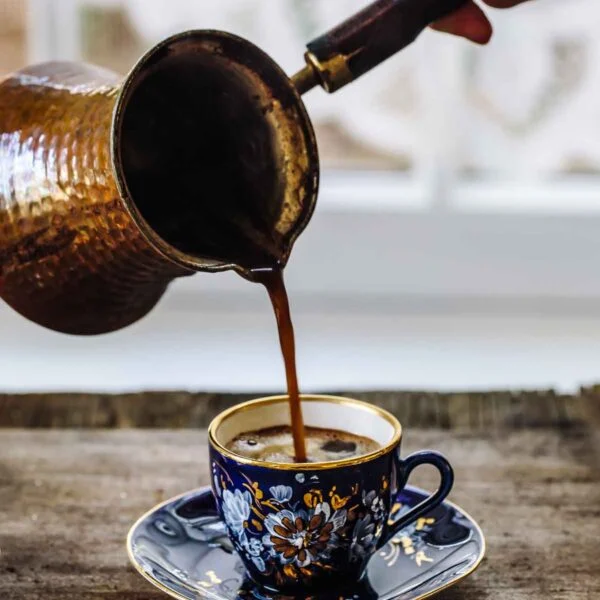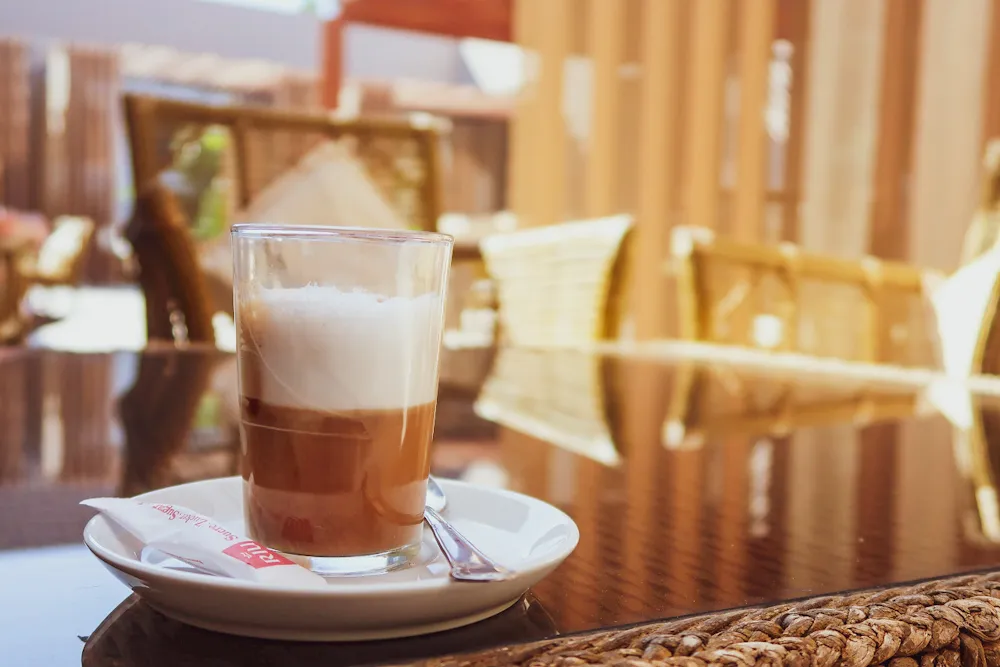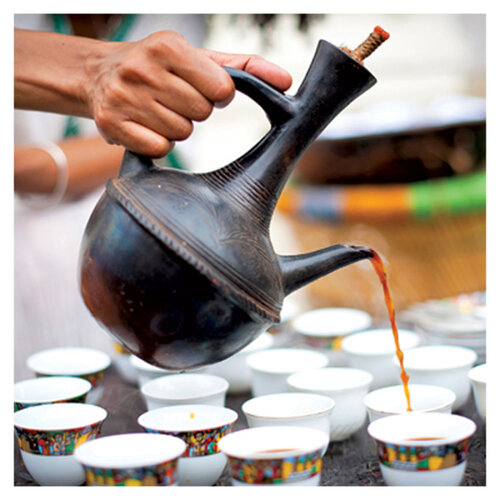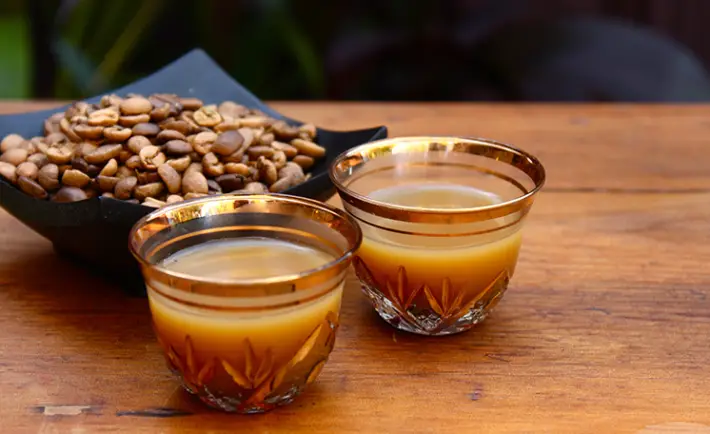Coffee Around the Arab World

By: Souria Dabbousi / Arab America Contributing Writer
Coffee has always had a unique place in the Arab World, where it can be found in plenty of coffee shops and residences. The beverage is derived from coffee plant seeds, which originated in the Horn of Africa and spread to the rest of the globe through Yemen about 500 years ago. The earliest known coffeehouse was in Istanbul in 1554, and the Turkish term kahve, which was itself a derivation from the Arabic word qahwah, is where the word “coffee” in Europe originally appeared.
- Turkish Coffee

Turkish coffee is a type of coffee made without any filtration using very finely ground coffee. A cezve, a unique pot with a long handle made of either copper or brass, is used to create this flavorful beverage.
The cezve should add at least one teaspoon of coffee for every cup of water. Before setting the cezve on the burner, the water and coffee are gently mixed together. Over medium heat, the coffee is gradually brought to a boil. An upper layer of froth will develop while the coffee boils. The “face” of the coffee is referred to as this. This should be distributed among the coffee cups using a spoon. The coffee is poured into tiny, decorative cups as it comes to a boil and over the foam.
Turkish coffee can also be made in hot sand as an alternative. As it takes longer to brew, this approach may provide a richer scent and flavor for certain people.
- Nous Nous

A popular beverage in Morocco, it is generally served in a glass and literally means “half-half” since it contains equal parts milk and espresso. Some traditions state that males like to have a cafe noir, a tiny cup of espresso, whereas ladies often choose nous nous.
You will need half a cup of milk to begin making nous nous, which you may froth using an espresso maker or a hand foamer. Add half a cup of espresso to the frothed milk. The ideal nous nous is available by serving it with sugar on the side for a sweeter taste.
- Mazagran

Mazagran is a sweetened cold coffee beverage popular in Algeria, where it was invented. The history of Mazagran coffee is said to have begun in about 1840. In many countries today, the iced coffee beverage, which has a number of ingredients, is popular during the warmer months.
Pour a cup of black coffee that has been freshly brewed over ice in a tall, thin glass to make Algeria’s version of coffee. Add a lemon that has just been squeezed and your preferred sweetener after.
- Jabana Coffee

For the people of Sudan, who share a method of producing coffee with Ethiopia and Eritrea, coffee is an essential component of daily life.
Starting with raw, green coffee beans, this coffee is hand-roasted, usually on a burner heated by charcoal. After roasting, the beans are then moved to a steel or wooden pestle and ground into a fine powder.
It is then transferred into the clay flask, from where the beverage conveys its name, the jabana, along with the ground coffee beans, water, and other spices.
- Arabic and Levantine Coffee

Arabic coffee, known as qahwa or gahwa, is most widely consumed in Saudi Arabia, Yemen, Iraq, and the United Arab Emirates. Cardamom, saffron, cloves, and occasionally even cinnamon can be used to flavor qahwa, giving it a delicate and distinctive taste.
It has an ashen greenish-brown color, as opposed to the rich, black coffee that is native to Turkey. This results from utilizing green coffee beans that have been extremely lightly roasted.
On the other hand, Levantine coffee is most similar to traditional Turkish coffee. Despite essentially identical preparation methods, the dark, rich beverage is normally served unsweetened and flavored with cardamom in Syria, Jordan, Palestine, and Lebanon.
Check out Arab America’s blog here!








